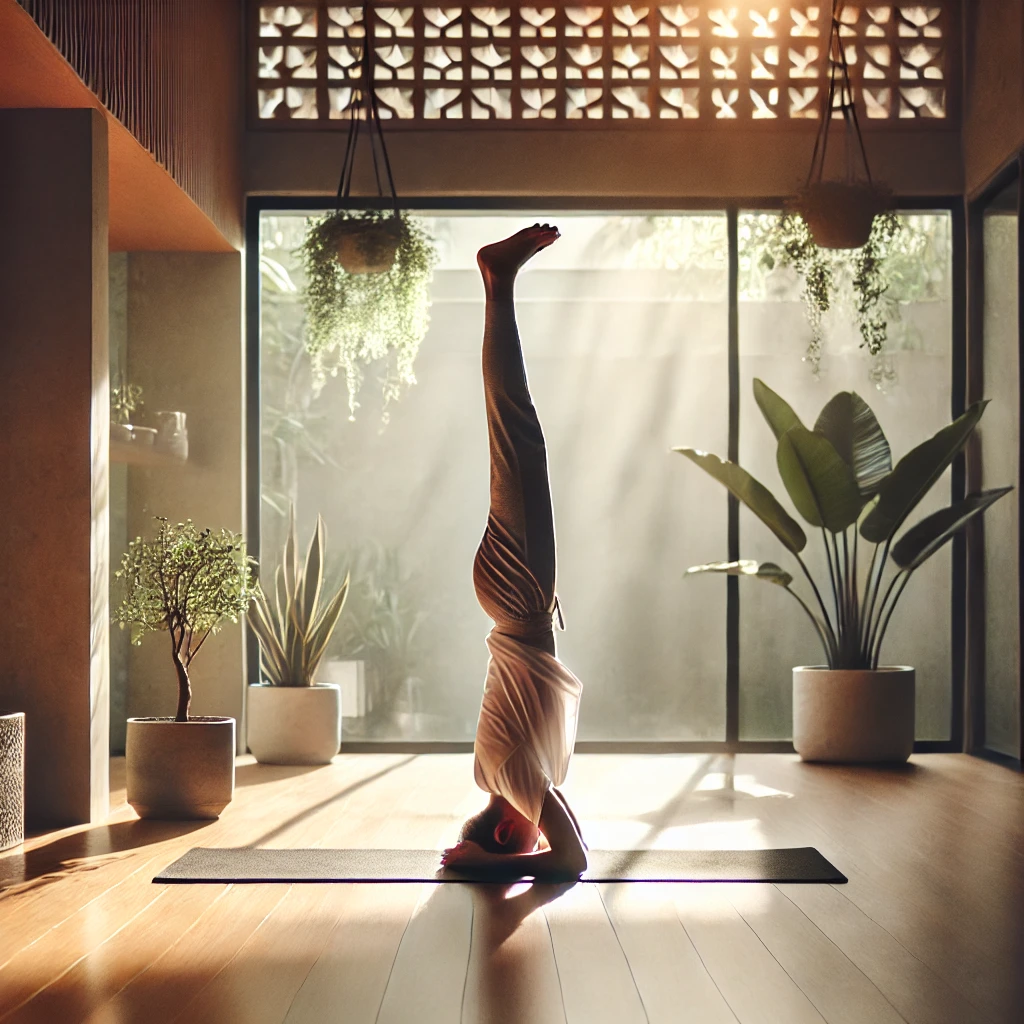Have you ever wondered what it would be like to see the world from a different perspective? Well, inversion therapy offers just that – both literally and figuratively. Let’s dive headfirst into the world of inversions and discover why yogis have been praising this practice for centuries.

What is Inversion Therapy?
Inversion therapy is a technique where you position your body so that your head is below your heart. This can range from simple poses like forward folds to more advanced postures like headstands. The goal? To reverse the effects of gravity on your body and reap a multitude of health benefits.
Scientific studies highlight the benefits of inverting the body, particularly in spinal decompression and circulation. By reversing gravity’s pull, inversions can help alleviate pressure on the spine, promoting better alignment and reducing tension. Additionally, they stimulate lymphatic drainage, which supports the body’s natural detoxification process. This increased circulation and fluid movement contribute to reduced inflammation, improved energy levels, and enhanced mental focus. Over time, regular inversion practice may also help improve posture, relieve muscle stiffness, and support cardiovascular health. Whether you’re aiming for physical relief or a mental reset, turning upside down can be a simple yet powerful way to restore balance in both body and mind.
The Yoga-Inversion Connection
In the world of yoga, inversions hold a special place. Poses like Sirsasana (Headstand), often called the “king of asanas,” have been practiced for thousands of years. These poses are not just about physical prowess; they’re deeply rooted in yogic philosophy, symbolizing a shift in perspective and a journey towards self-realization1. Ancient yogic texts suggest inversions reverse aging, enhance focus, and awaken spiritual energy by stimulating the Sushumna Nadi (central energy channel)2.
Physical Benefits of Going Upside Down
Enhanced Circulation and Spinal Health
When you invert, gravity works in your favor, helping to:
- Create more protective fluid around spinal discs3
- Improve blood flow throughout the body4
- Enhance oxygen delivery to brain tissues5
- Reduce pressure on nerve roots6
Strength and Flexibility
Regular inversion practice helps:
- Strengthen core muscles and improve balance7
- Increase spinal flexibility8
- Enhance joint health through improved synovial fluid circulation9
- Build upper body strength through weight-bearing poses
Safety First: Who Should Not Invert
Inversion therapy isn’t suitable for everyone. Avoid inversions if you have:
- High blood pressure
- Heart conditions
- Glaucoma or other eye conditions
- Recent injuries or surgeries
- Pregnancy
- Osteoporosis
Getting Started: Beginner-Friendly Inversions
Start slow and prioritize safety:
- Legs-Up-the-Wall (Viparita Karani): A gentle inversion that reduces swelling and calms the mind.
- Downward Dog (Adho Mukha Svanasana): Strengthens shoulders while easing into an inverted position.
- Dolphin Pose: Builds arm and core strength for advanced inversions.
- Use Props: Blocks or walls provide stability. Begin with 10–30 seconds and gradually increase duration.
Mental and Spiritual Benefits
The practice of inversions extends far beyond physical benefits:
- Promotes mental clarity and focus
- Reduces anxiety and stress levels
- Enhances self-confidence
- Creates a fresh perspective on life
Inversion therapy offers a unique blend of physical, mental, and spiritual benefits. As B.K.S. Iyengar noted, inversions like Sirsasana transform “seminal energy into spiritual force,” fostering inner clarity and resilience.
Tips for Safe Practice
When beginning your inversion journey:
- Start with the smallest angle possible
- Practice with a qualified instructor
- Listen to your body and never force positions
- Build strength gradually through preparatory poses
- Keep breathing steady and controlled
Remember, the goal isn’t to achieve the perfect headstand immediately. Each small step in your inversion practice is an opportunity to grow stronger, both physically and mentally. As you progress, you’ll discover that turning your world upside down can be the very thing that helps you find your ground.
Namaste, and happy inversions!